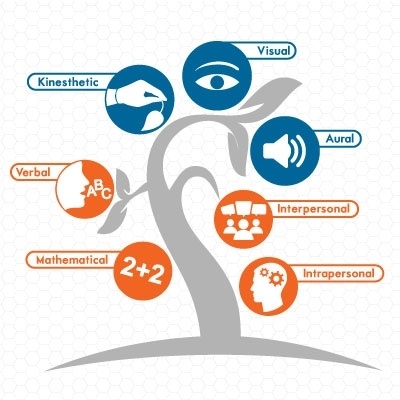Different Learning Styles: How To Balance Your eLearning Program
The World Wide Web has thrown the door wide open for learners. They’re no longer constrained by what can be accomplished in a classroom. Electronic learning, or eLearning, simply requires an internet service provider and a platform for access. Once those requirements are met, continuing educational possibilities are numerous. Content can exist solely online or it can be combined with in-person learning opportunities. Learners work alone, in groups or with instructors. Interactions with others are either synchronous or asynchronous. Because of its open-ended nature, eLearning has exceptional advantages. Learners can be located anywhere in the world, as long as an ISP is available. Once content is prepared, it often requires little intervention from educators. However, if necessary, they can update material at any time. One of the greatest advantages of eLearning is its flexibility. Educators adapt it to address learners’ different drives and learning styles.
What Brings You Here?
Motivations vary among learners. Some are pursuing specific goals and are satisfied once those objectives are achieved.
Sponsored content - article continues below
Trending eLearning Content Providers
Others are simply interested in learning for its own sake. Their curiosity arises from personal experiences. Many desire to connect with other learners who are drawn to the same content. Self-directed learners have internal goals they want to reach independently. These students prefer to control the pace of their learning.
What Do You Need?
The term “learning styles” refers to different ways students absorb and process information. Inherent characteristics, life experiences and requirements imposed by learners’ current situations impact their styles.
Educators who address individual styles can increase learners’ chances of success and satisfaction. A variety of learning style models exist. In many of these, learners can be described as:
- Active.
These individuals are most successful when they’re directly involved rather than passive. They prefer realistic, hands-on experiences. - Emotional.
They like to interact with others. Unstructured learning settings suit emotional learners best. - Observational.
These learners want to watch, listen and explore. They’re primarily self-directed. - Interacting.
While they’re independent thinkers, interacting learners also want to analyze the subject matter through group discussion.
With knowledge of eLearning possibilities, learner motivations and learning styles, educators create eLearning programs that address both content requirements and student needs.
What Do You Know?
The first step in developing an eLearning continuing education program is to be familiar with the participants. This means discovering what learners already know and where they have knowledge gaps.
It’s also important to determine why students are involved in the program and what they expect to achieve. Before a course begins, targeted surveys and questionnaires relay information about needs, assumptions and deficits from learner to educator.
With this information, an instructor successfully adapts learning experiences for the audience. If there are multiple learning styles and differences in baseline knowledge, all activities will not be equally appropriate for all students. Therefore, it’s helpful to provide opportunities that serve more than one purpose.
At the outset of a course, an educator should state specific learning expectations. Students will understand the level of commitment involved, indications of success and benefits they’ll achieve.
Most learners are already motivated. They understand that continuing education significantly impacts job success. It’s up to the educator to help keep that interest level high..
What Time Is It?
Some learners like immediate feedback, while others prefer to digest information for a while before discussions. Educators who include both synchronous and asynchronous learning opportunities help open eLearning programs to diverse groups of students.
- Synchronous Learning.
In synchronous learning activities, all students are involved at the same time. Formats include online chats, instant messaging, video or audio conferences, live webcasting and virtual classrooms. Learners with emotional, active or interacting learning styles thrive with opportunities to immediately interface. Also, real-time experiences help students who are insecure about their skills or need additional support to understand concepts. Synchronous learning lends itself to content that focuses on interpersonal relations, such as communication skills, diversity issues and foreign languages. - Asynchronous Learning.
With asynchronous learning, students set their own schedules. An entirely self-paced curriculum fits this model. Courses that have both synchronous and asynchronous components might include discussion forums, email, blogs, videos, webcasting, simulations, and games. Asynchronous learning is compatible with most types of content. Observational learners do well with these less-structured activities. Individuals with the interacting style enjoy the independence but still have opportunities to collaborate with others. As long as active learners have real-life, engaging activities, asynchronous learning addresses their needs as well. Emotional learners are able to connect with others through forums.
What Works for You?
Though important, timeline is not the only important aspect of eLearning. If students have different learning styles, educators need a variety of pedagogical approaches. These are typically active or passive.
- Active Learning.
Research indicates active methods work for the largest number of learners. The most effective procedure is to let students immediately apply learning, such as through teaching others. With these opportunities, most students recall 90 percent of their learning. About 70 percent of learning is retained when students have the chance to practice. Group discussions help learners remember about 50 percent of content. It’s no surprise active learning is effective for students with active learning styles. Emotional learners are drawn to collaborative opportunities. Those with the interacting style benefit from discussions. - Passive Learning.
With passive instructional techniques, students generally recall less. However, these methods are highly effective with certain learners. During passive demonstrations, most learners nail down less than one-third of the information presented. Audiovisual lessons result in even less learning. Reading text and listening to lectures are generally least helpful for retention. Observational learners like to investigate on their own. Passive learning experiences let them absorb information. Afterward they can practice learning more actively.
The wonderful and frustrating thing about eLearning program development is that one size doesn’t fit all. Educators have the opportunity to reach a variety of students by using learning styles to drive activities.












